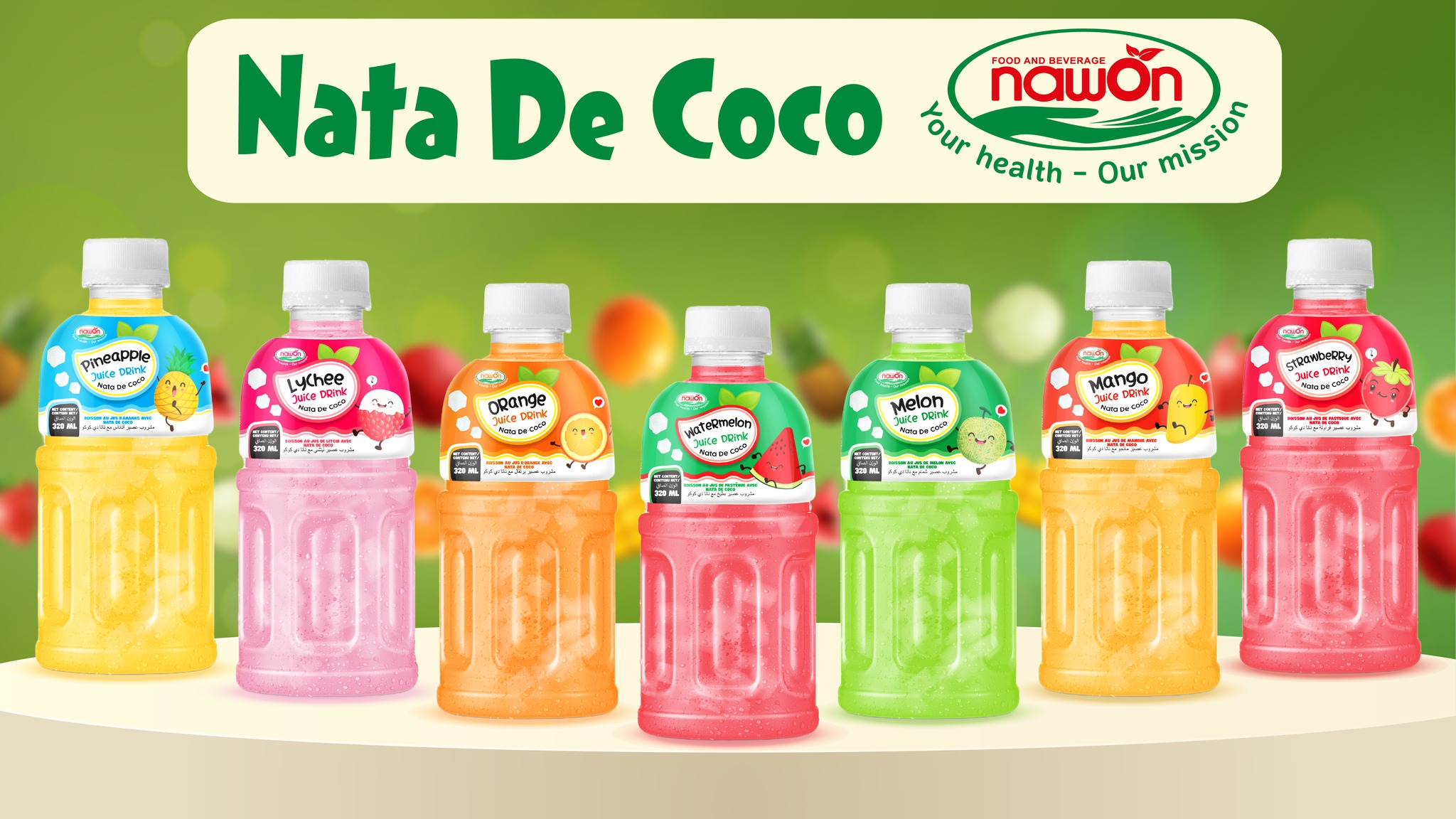Juices with Nata de Coco is a popular product line on the market. This product perfectly combines fresh fruit juice and nata de coco, creating a delicious taste and great health benefits. This article will introduce different flavor combinations, including orange, watermelon, pineapple, lychee, blackcurrant, melon, strawberry, and mango, with short labels and 5 separate flavors, including lychee, melon, strawberry, pineapple, and longan mango.
The juice with nata de coco is attractive today
Coconut water and Nata de Coco
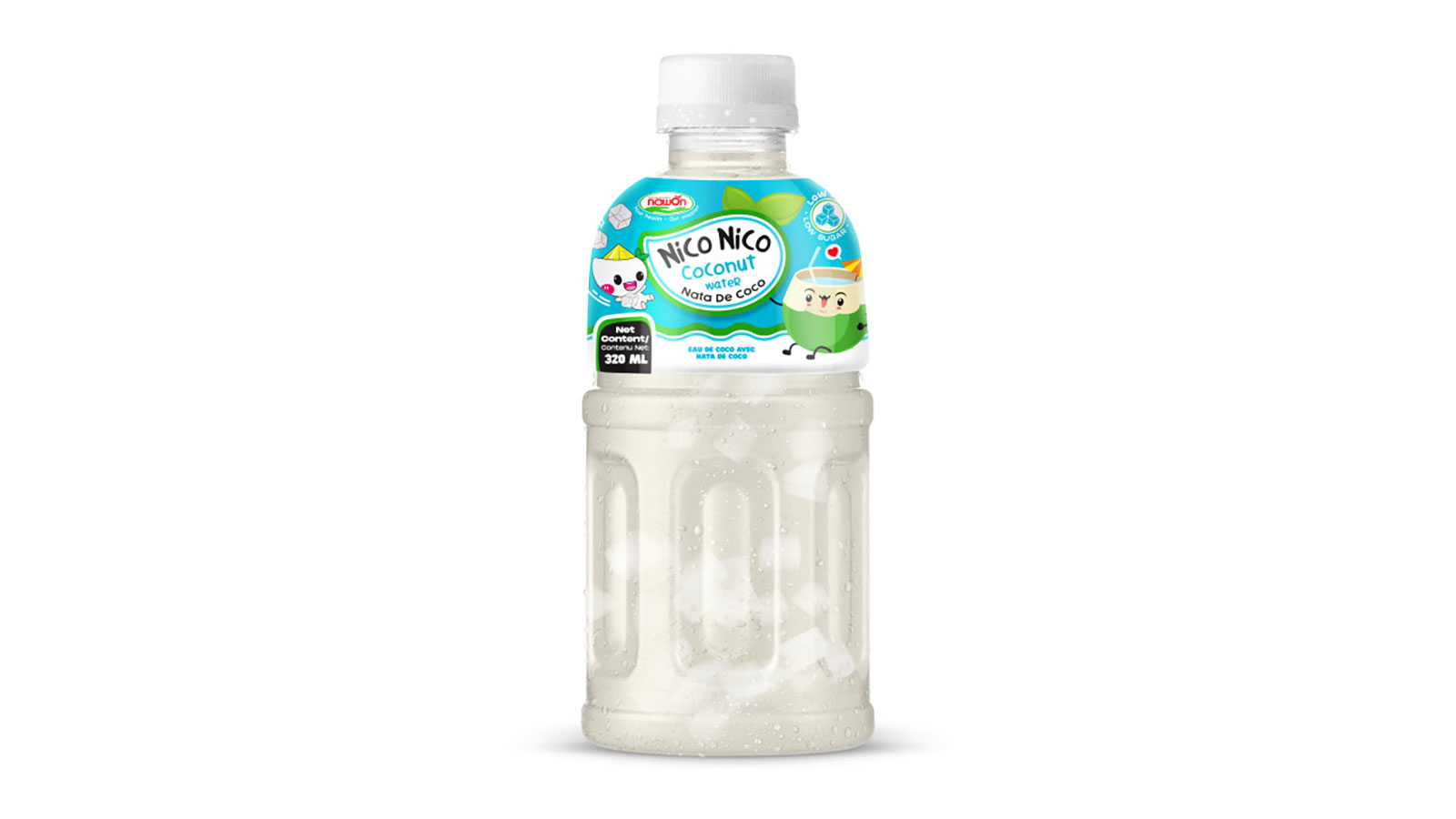
When nata de coco and coconut water unite, they create a harmonious fusion that combines delightful texture and rich flavor. The chewy nata de coco perfectly complements coconut water’s naturally refreshing and slightly sweet taste, resulting in a satisfying and enjoyable combination.
This drink with nata de coco creates a truly refreshing and thirst-quenching experience, making it an ideal choice for hot weather or as a palate-cleansing delight.
Lychee juice drink with Nata de coco
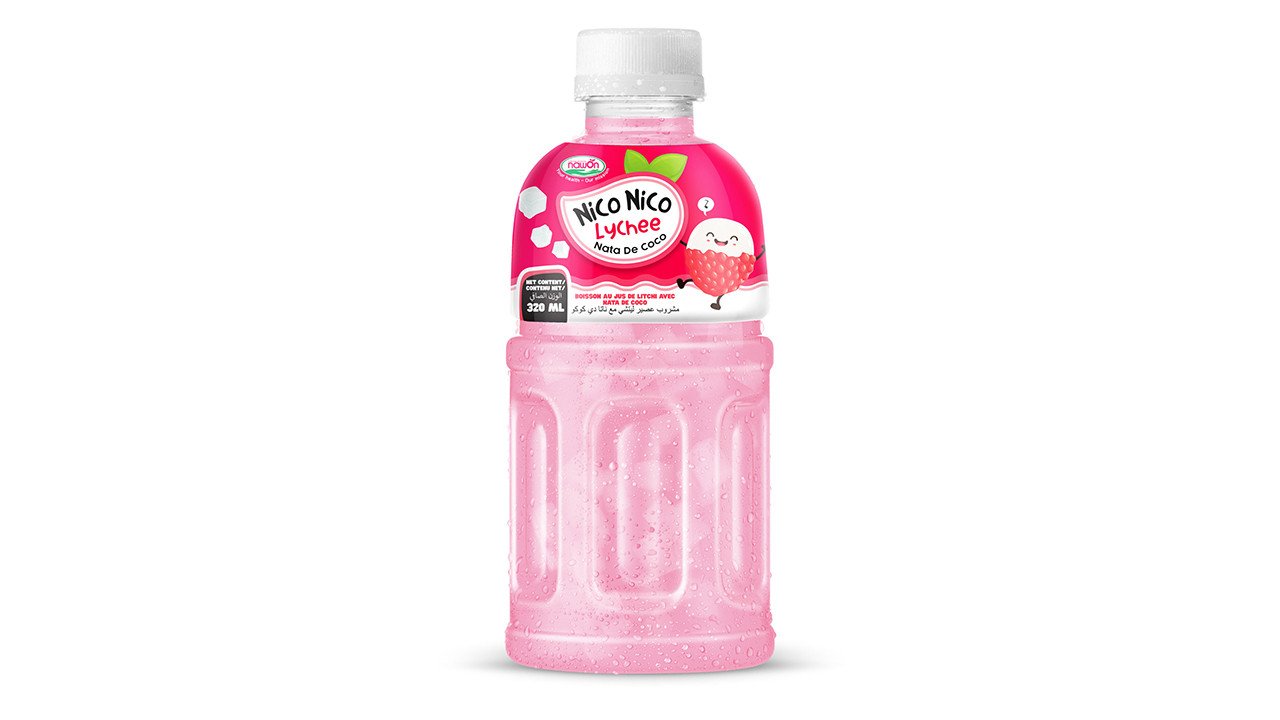
From fresh lychees grown on Vietnamese lychee fruit farms, Nawon harvests and produces lychee juice products, including lychee juice with nata de coco. This refreshing and flavorful beverage combines the sweet taste of lychee juice with the chewy texture and subtle coconut flavor of nata de coco, a type of jelly made from fermented coconut water.
This drink brings a sweet and slightly tangy flavor from the lychee juice, with a refreshing and chewy texture from the nata de coco. It’s a popular choice for those seeking a tropical and refreshing beverage, perfect for quenching thirst on a hot day or as a delightful treat at any time.
Mango juice drinks with Nata de coco
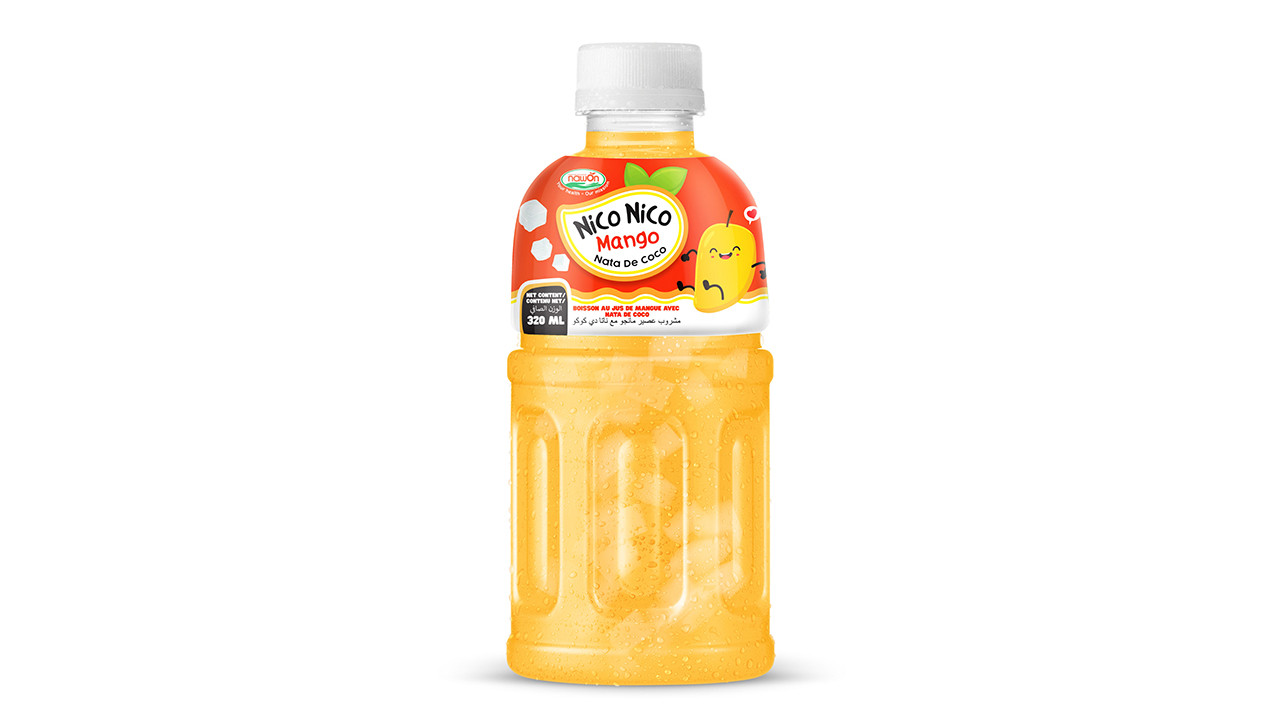
Mango juice with nata de coco is a delightful combination that offers a tropical twist to your beverage experience. This drink blends the rich, sweet flavor of mango juice with the chewy texture and subtle coconut taste of nata de coco jelly cubes.
Mango juice is made from the pulpy flesh of ripe mangoes, known for its luscious sweetness and vibrant tropical flavor profile. When paired with nata de coco, the drink gains an added dimension of texture and a hint of coconut flavor from the nata de coco.
See more: What Is Nata De Coco And How To Make Nata De Coco At Home
Melon juices with nata de coco
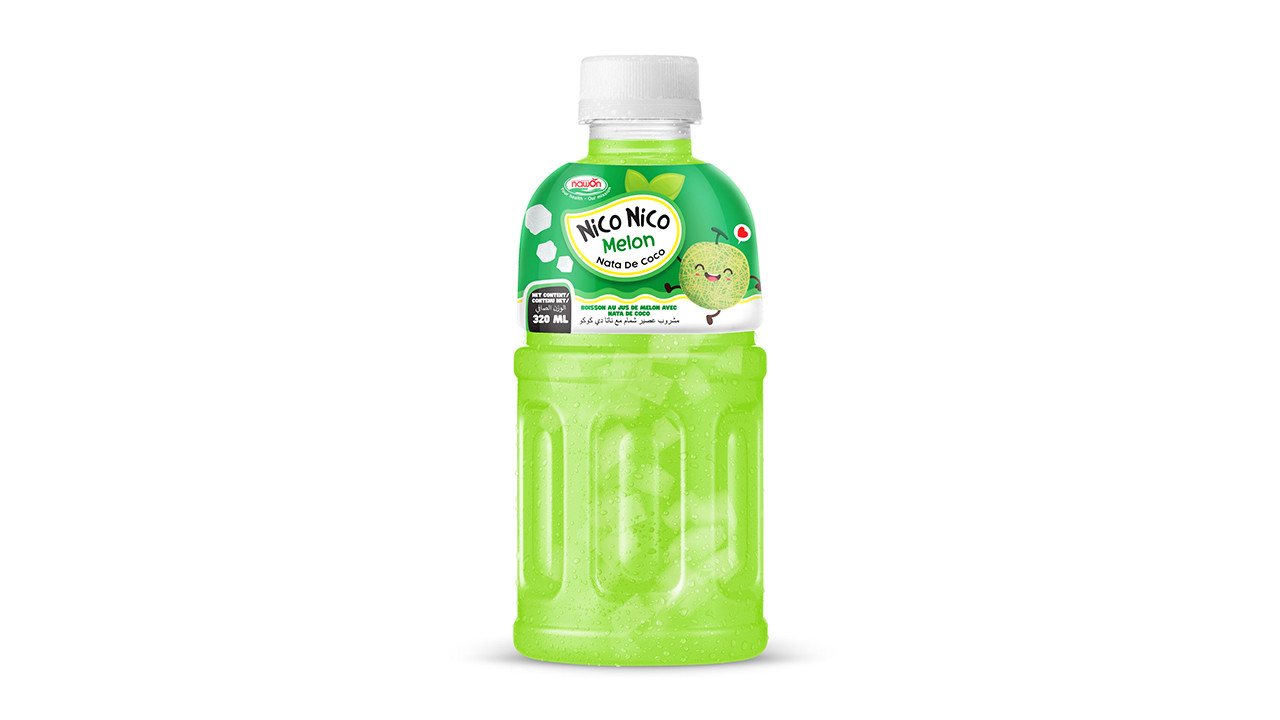
Melon juice with nata de coco is a delightful and refreshing beverage that combines melon juice’s sweet and refreshing taste with the chewy texture and subtle coconut flavor of nata de coco.
The taste of this juice with nata de coco is wonderfully fruity and refreshing, with the natural sweetness of the melon complemented by the chewy texture of the nata de coco. The combination creates a harmonious blend of flavors and textures.
See more: Top Best Nata De Coco Brand
Passionfruit juice with nata de coco
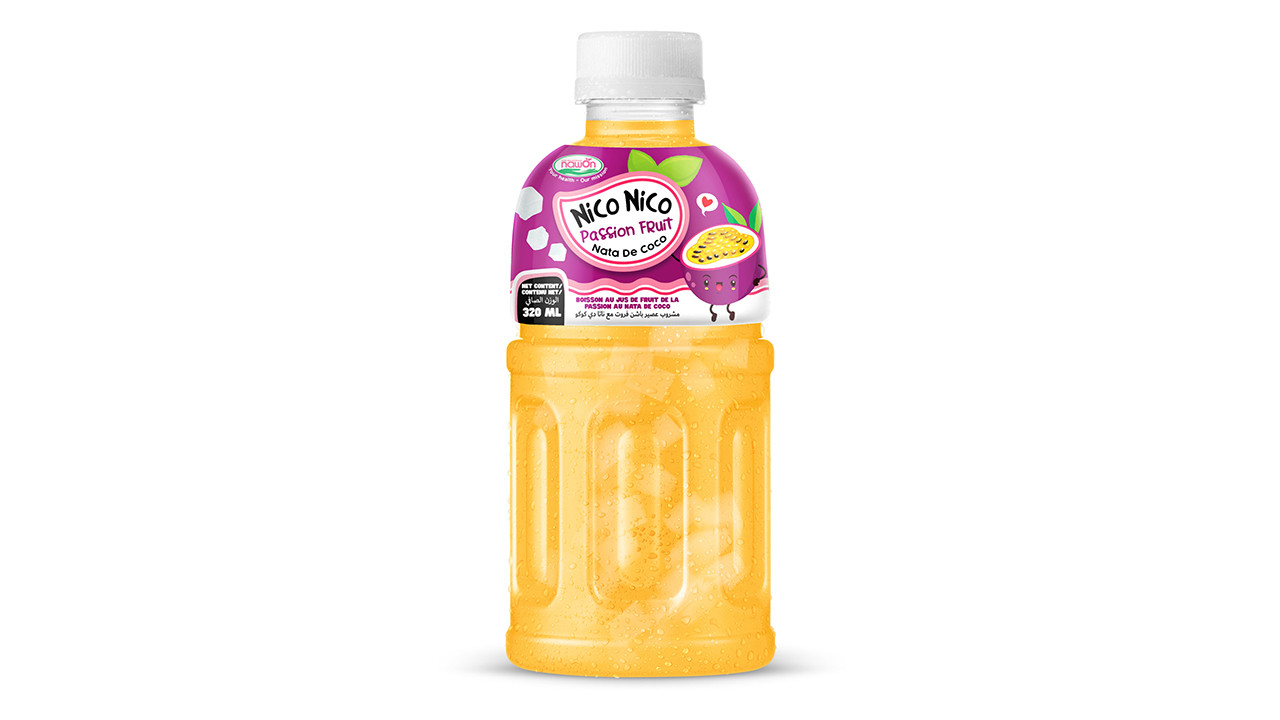
Passion fruit juice with nata de coco is a tantalizing combination that offers a burst of tropical flavor with a delightful textural contrast. This beverage pairs the tangy and exotic taste of passion fruit juice with the chewy texture.
Passion fruit juice is derived from the pulp of ripe passion fruits, known for their distinctive sweet-tart flavor profile and floral aroma. When combined with nata de coco, the drink gains an additional layer of complexity, with the jelly cubes providing a chewy and refreshing element that enhances the overall drinking experience.
Strawberry juice with nata de coco
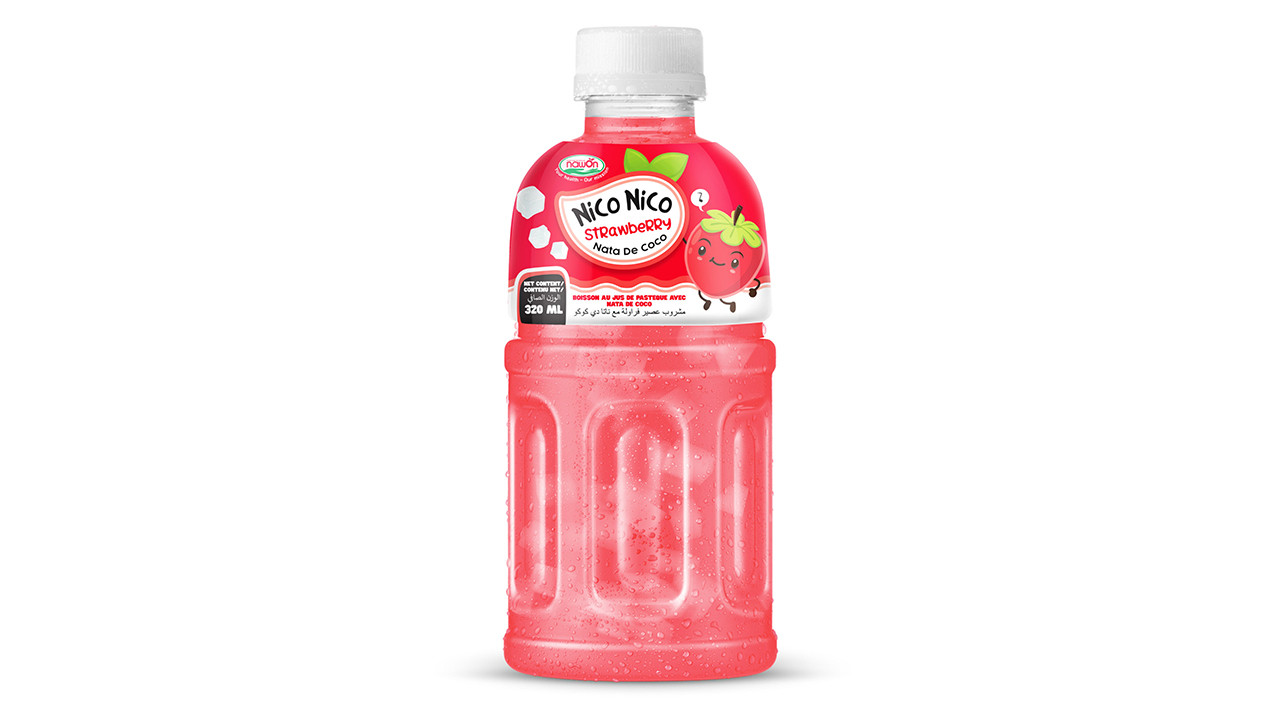
Strawberry juice with nata de coco is a delightful beverage that combines the sweet and tangy flavor of strawberry juice with the chewy texture and subtle coconut taste of nata de coco. Strawberry juice is typically made from fresh strawberries, known for their vibrant color and sweet, slightly tart taste. When paired with nata de coco, the drink gains an extra layer of texture and flavor complexity but delicious.
Pineapple juice with nata de coco
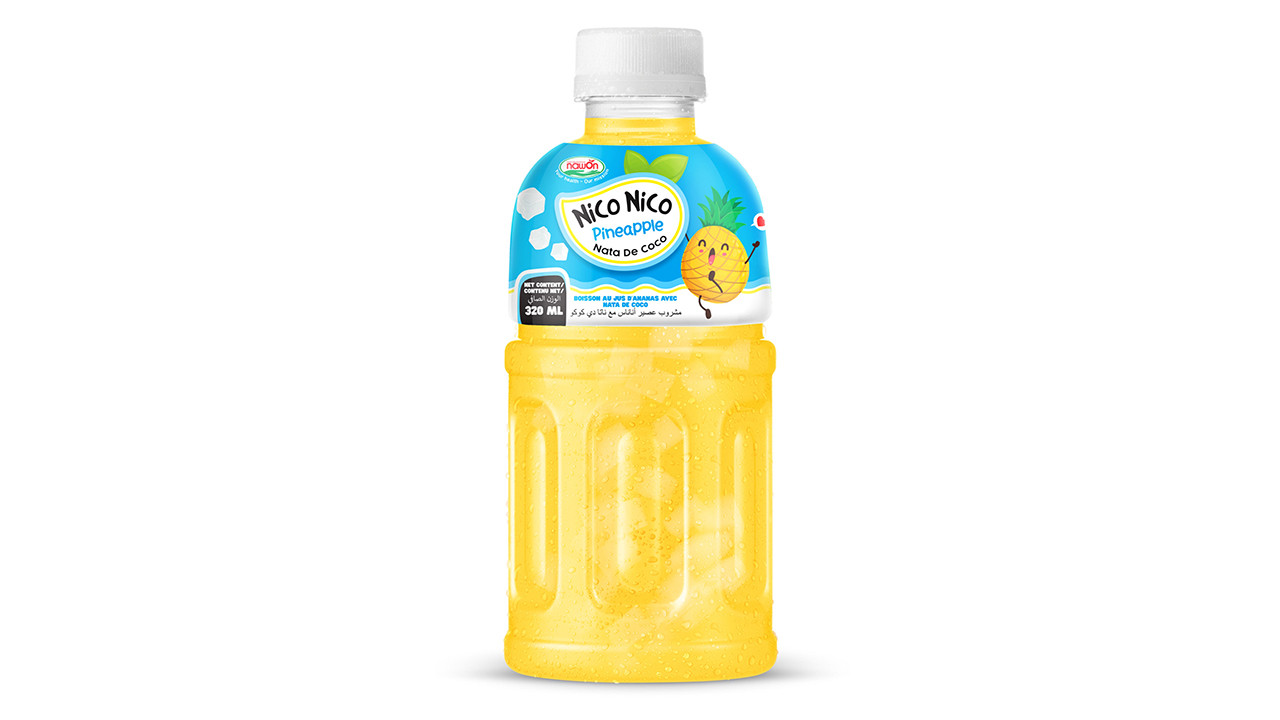
Pineapple juice with nata de coco is a delightful tropical drink that combines the sweet and tangy flavor of pineapple juice with the chewy texture and subtle coconut undertones of nata de coco. Pineapple juice is made from the ripe fruit of pineapples, known for their juicy and refreshing taste with a hint of tartness. When paired with nata de coco, a jelly-like substance made from coconut water fermentation, the drink gains an added layer of texture and a touch of coconut flavor.
Blueberry juice with nata de coco
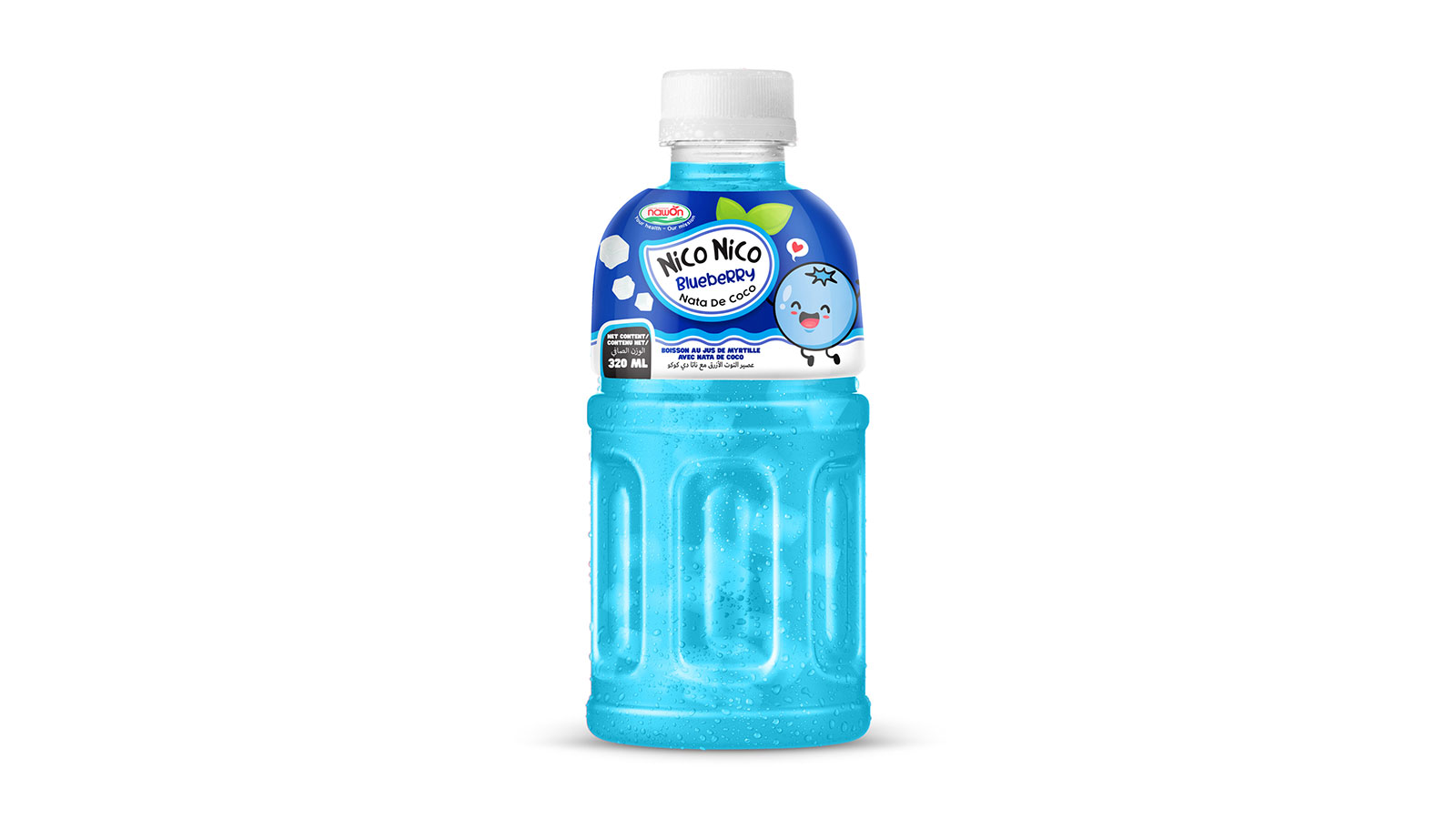
Combining the natural sweetness of blueberry juice with the chewy texture of Nata de Coco creates a harmonious flavor pairing that is both refreshing and satisfying. The juicy and slightly tangy notes of blueberries complement the subtle sweetness of Nata de Coco, resulting in a delightful balance of flavors.
Nata de Coco enhances the overall drinking experience of this blueberry juice by adding a chewy texture that contrasts with its smoothness. Each sip offers a burst of fruity goodness mixed with the satisfying chewiness of Nata de Coco, creating a unique and enjoyable sensation.
Peach juice with Nata de coco

Blending the lusciousness of peach juice with the chewy, jelly-like texture of Nata de Coco creates a harmonious fusion of flavors and textures. Peach juice’s natural sweetness and subtle tanginess perfectly complement the refreshing and slightly tart taste of Nata de Coco, resulting in a sensational delight for your taste buds.
The combination of peach juice and Nata de Coco offers a refreshing and satisfying beverage that transports you to a peach-filled paradise.
Watermelon juice with nata de coco
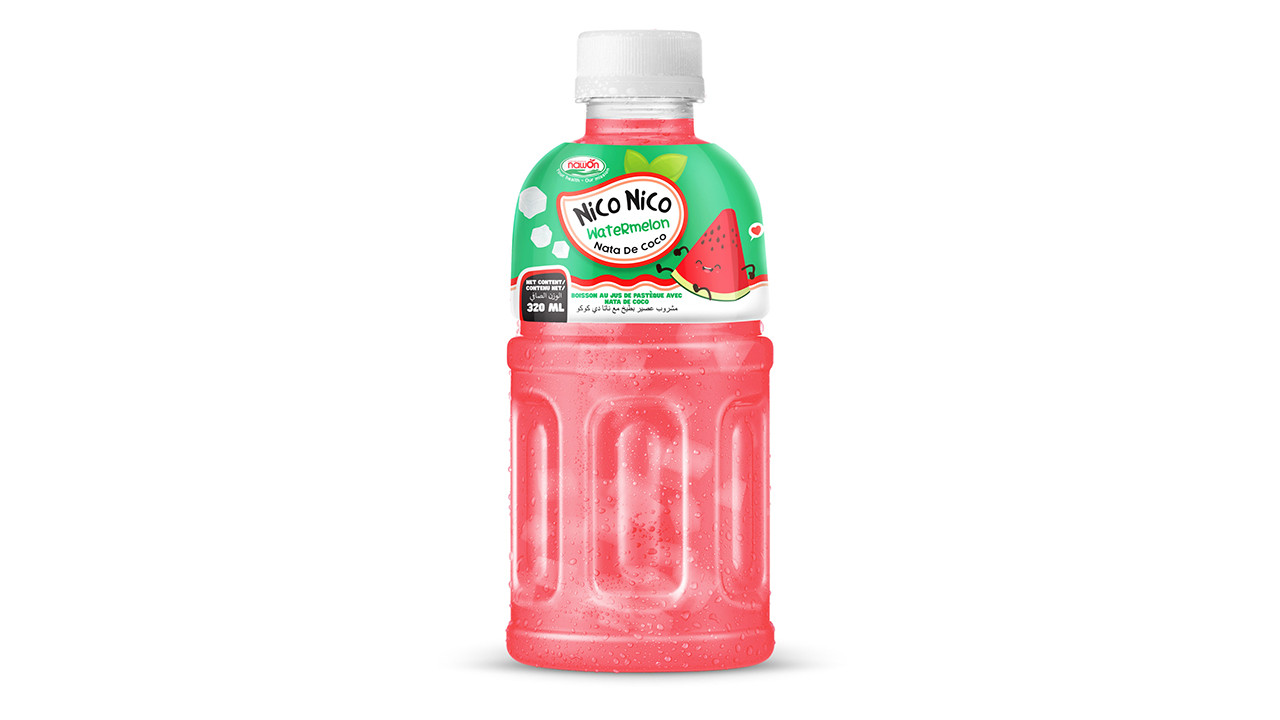
Watermelon juice with nata de coco is a refreshing and flavorful beverage that combines the nata de coco. Watermelon juice is a hydrating property and a refreshing, subtly sweet flavor profile. When combined with nata de coco, the drink gains an extra layer of texture and a hint of coconut essence from the nata de coco.
Apple juices with Nata de Coco
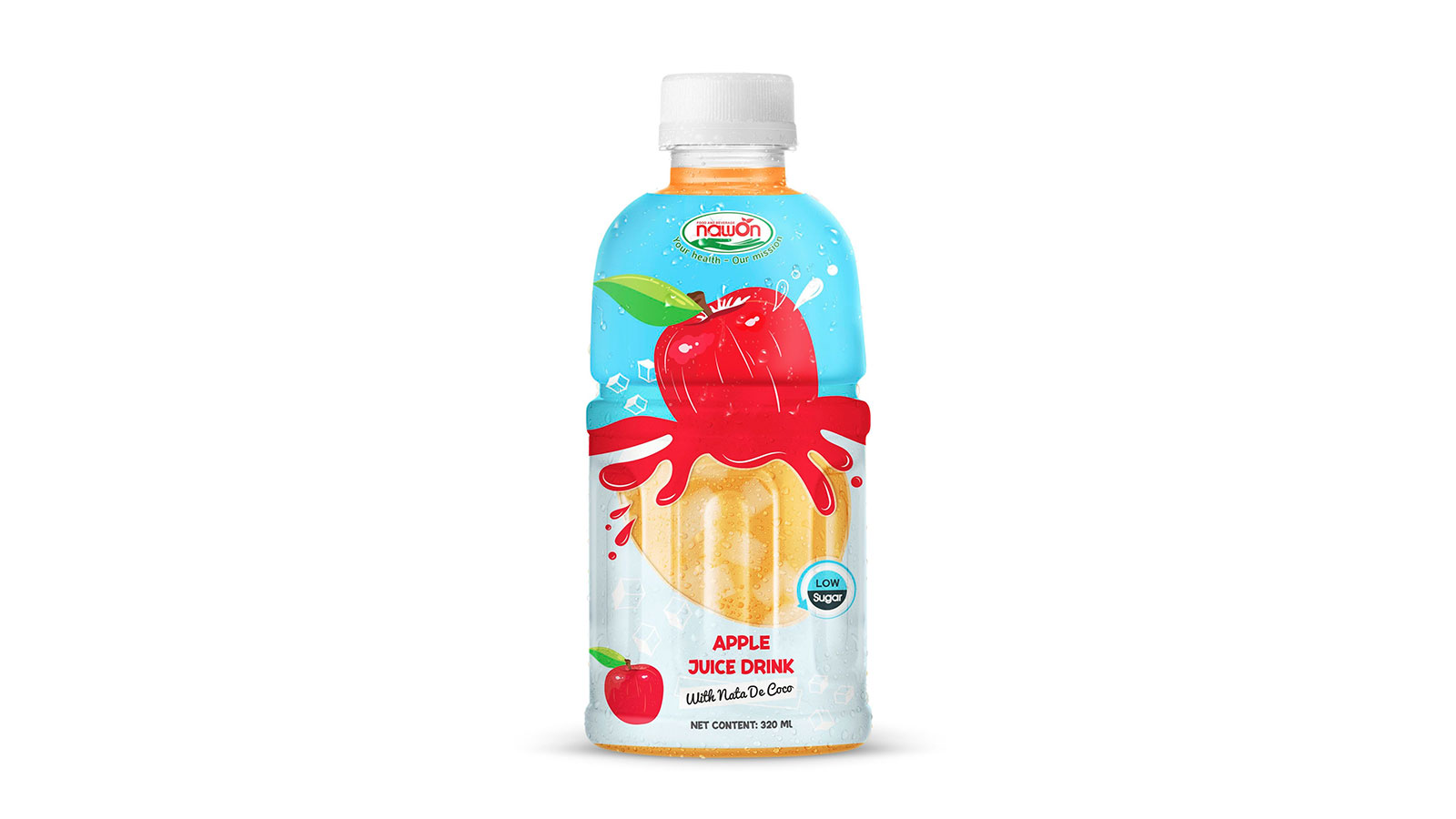
Combining the crisp and tangy taste of apple juice with the chewy, jelly-like texture of Nata de Coco creates a delightful contrast of flavors and textures. The natural sweetness of the apple juice complements the slightly tart and refreshing taste of Nata de Coco, resulting in a harmonious blend that tantalizes the taste buds.
Apple juice with nata de coco offers a refreshing and satisfying beverage perfect for quenching your thirst on a hot summer day or as a treat for any occasion.
Guava juice with nata de coco
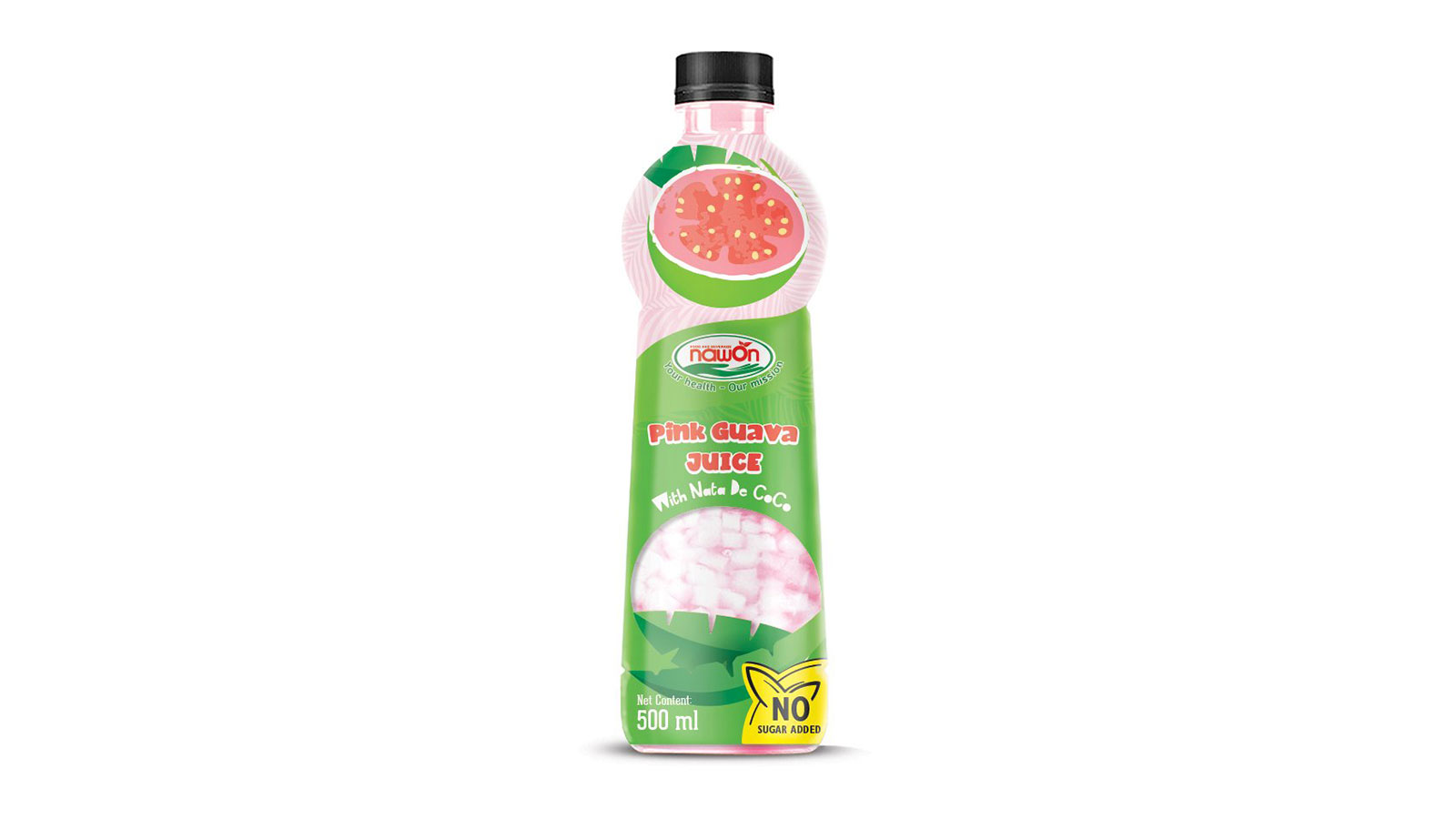
Combining the sweet and tangy taste of guava juice with the chewy and refreshing texture of Nata de Coco creates a harmonious fusion of flavors. The natural sweetness of guava complements the subtle tartness of Nata de Coco, resulting in a delightful balance that tantalizes the taste buds.
This coco de nata drink offers a refreshing and indulgent beverage that transports you to a tropical paradise.
What makes our Nata de coco drink different from the rest of the market?
With many nata de coco production appearing on the market, making a product different is a special point at Nawon. So, what are those differences? Below are some special features of Nawon:
- Fresh fruit juice creates Nawon Nata de Coco drinks that are not from concentrate or artificial ingredients, which makes the quality of our Nata de Coco drinks stand out from the market.
- Nata de coco is the fermentation of coconut water with the help of the bacterium acetobacter xylinum.
- Nata de Coco drink is healthy for children and adults because it is produced with fresh fruit juice and high-quality Nata de Coco.
- Nawon Nata de coco drink meets the standards of many countries such as Korea, South Korea, the US, the UK, etc.
- Nawon has exported more than 300 containers per month, which means our production capacity has reached the scale of the economy. This helps us to produce products at high speed and a lower price.
Nata de Coco has the remarkable ability to enhance the flavor and texture of various juices, creating exciting combinations of flavors and experiences. Adding Nata de Coco to fruit juice products will bring these drinks to a whole new level of enjoyment. The juices with nata de coco introduced above will be one of the suggestions to be noticed.

